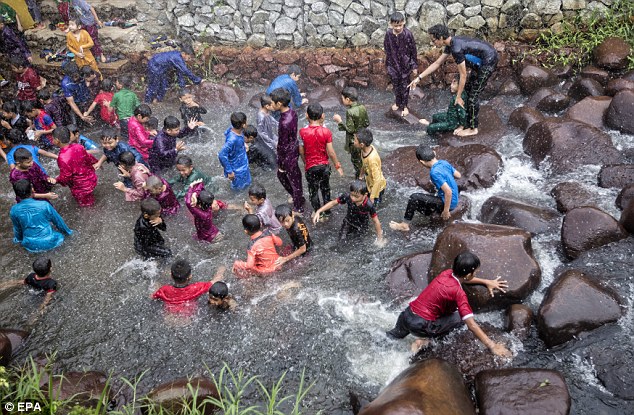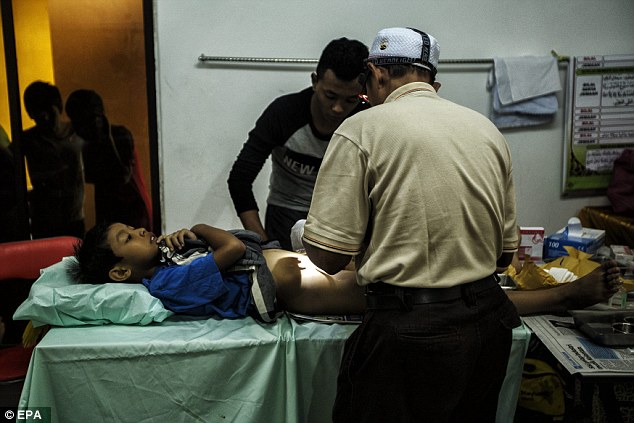

 |
 |
Like Indonesia the boundaries of Malaysia result from colonial occupation rather than nature, Malaysia being the British colony and Indonesia the Dutch. Peninsular Malaya is the continuation of the Thailand peninsula and the southernmost part of continental Eurasia. It became independent, as the Federation of Malaya, in 1957. In 1963 it merged with the British parts of Borneo, Sabah and Sarawak, and with Singapore, to become Malaysia. The relationship with the island city-state of Singapore (which is joined to the peninsula by a bridge and causeway) did not last long and Singapore separated in 1965.
Malasia is a federation of the 11 peninsular states and the two Borneo ones. Nine of the peninsular states retain their hereditary Sultans, and the King is selected from them on a 5-year rotation. This position is largely ceremonial, and the country is goverened by a bicameral parliament. The capital is Kuala Lumpur but an admistrative capital Putrajaya is being developed nearby (perhaps to dodge the traffic).

Islam is the state religion and about 65% of the inhabitants are Muslim. Ethnic Malays (57% of the population) are automatically assumed to be Muslim. Malays and the indigenous people (12%, mostly in Borneo) have certain privileges over the Chinese and Indians (Buddhist, Christian and Hindu) who make up the rest of the population.
Circumcision of boys

Muslim boys are typically circumcised between the ages of 5 and 12. As we see from this picture of boys splashing about in the river at a mass circumcision ceremony in Sungai Pangsun, near Kuala Lumpur, the prospect does not seem to fill them with terror. On the contrary, it is an important part of growing up. Some boys, particularly from well-to-families, will be circumcised privately but as in other south-east Asian countries these mass events are very popular.

Circumcision of girls
Female circumcision is legal in Malaysia, and in 2009 the National Council on Islamic Religious Affairs (JAKIM) introduced a Fatwa declaring female circumcision to be obligatory (wajib) for girls. Needless to say this created a bit of a ruckus. According to the WHO this: "reflects deep-rooted inequality between the sexes, and constitutes an extreme form of discrimination against women". The idea that removing the foreskins of both girls and boys discriminates against girls seems to defy any form of logic. In fact a 2015 study by Mary J. Ainslie, of the University of Nottingham Malaysia campus, reports that: "Multiple accounts of the practice across Indonesia suggest that although it differs radically across the country, it is far less severe than male circumcision" (our italics). Practices seem to vary from slitting the clitoral hood, to making a little nick in it, ot just a symbolic pinprick. (Full reference below.)
Circumcision clamps
Malaysia kickstarted the industry for modern disposable circumcision clamps. Dr. Gurchran Singh Tara Singh developed the Tara Klamp during the 1980s and early 1990s. It was first marketed in 1995. Gurch, as he is known to his friends, should properly be regarded as the father of the modern disposable circumcision clamp. There is a certain irony here since the Sikh religion formally prohibits circumcision. Since then various rival devices have appeared in Malaysia including the Sunathrone and the Ismail Clamp. They seem to have stolen the market from the more populous Indonesia next door. Detail of the clamps are on our Instruments and Techniques page.
Acknowledgements and Sources
Alex Matthews. Putting on a brave face! Young Muslim boys take a dip in a river and joke around before taking part in a mass circumcision ceremony in Malaysia. Mailonine 5 December 2016
Mary J. Ainslie. The 2009 Malaysian Female Circumcision Fatwa: State ownership of Islam and the current impasse. Women's Studies International Forum 52 (2015) 1–9. The full paper is behine a paywall, but this link will get you the abstract and various 'snippets' (their choice of words!)
Wikipedia, of course. Where would we be without it?